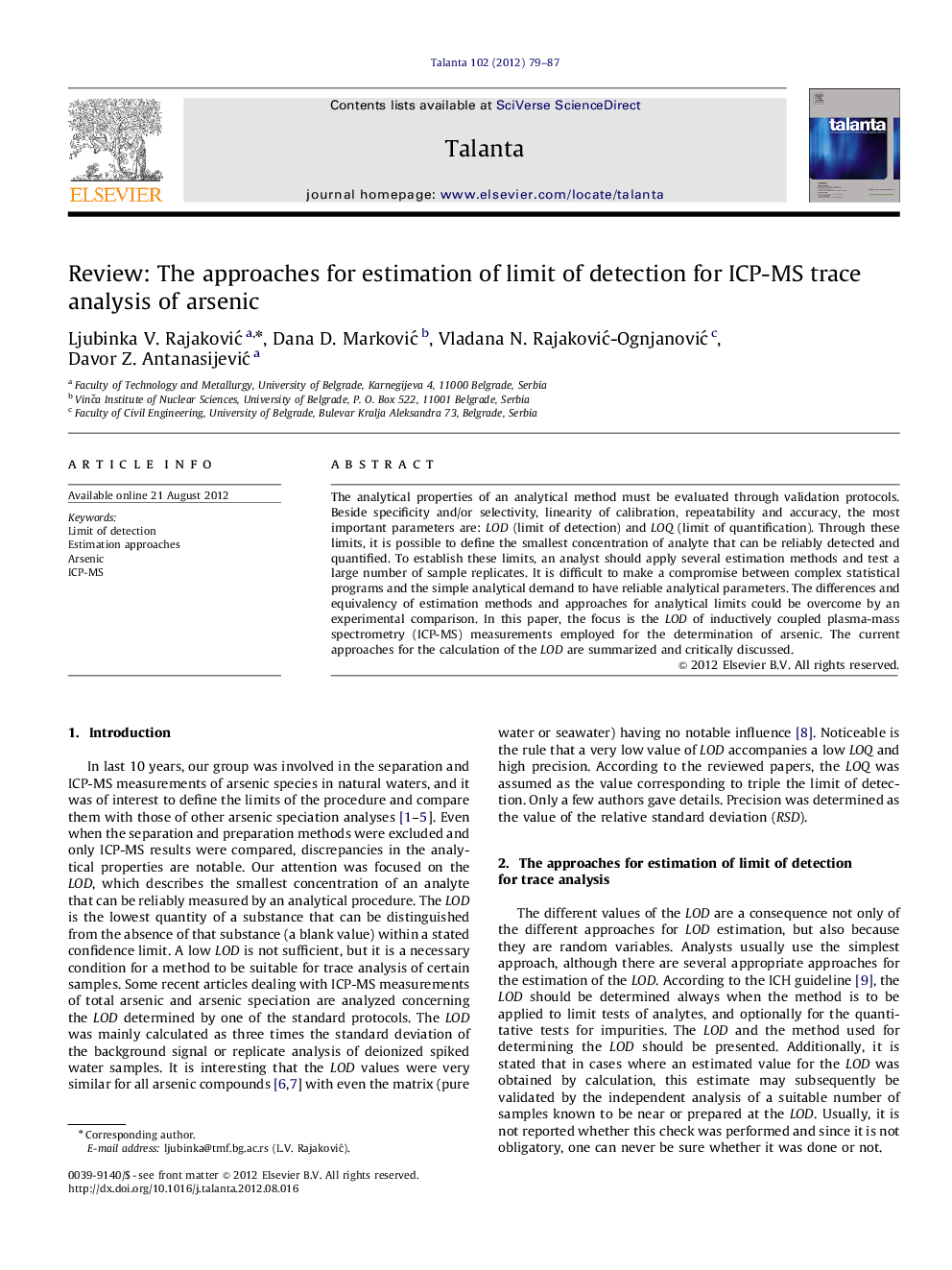| Article ID | Journal | Published Year | Pages | File Type |
|---|---|---|---|---|
| 1244430 | Talanta | 2012 | 9 Pages |
The analytical properties of an analytical method must be evaluated through validation protocols. Beside specificity and/or selectivity, linearity of calibration, repeatability and accuracy, the most important parameters are: LOD (limit of detection) and LOQ (limit of quantification). Through these limits, it is possible to define the smallest concentration of analyte that can be reliably detected and quantified. To establish these limits, an analyst should apply several estimation methods and test a large number of sample replicates. It is difficult to make a compromise between complex statistical programs and the simple analytical demand to have reliable analytical parameters. The differences and equivalency of estimation methods and approaches for analytical limits could be overcome by an experimental comparison. In this paper, the focus is the LOD of inductively coupled plasma-mass spectrometry (ICP-MS) measurements employed for the determination of arsenic. The current approaches for the calculation of the LOD are summarized and critically discussed.
► Approaches for the estimation of analytical limits were addressed and reviewed. ► A protocol for LOD determination, which harmonizes complex math models with demands of analysts. ► The complex models (Hubaux–Vos and ISO) have been compared with traditional models. ► The complex methods are both complicated and biased. ► The concept of the traditional method should be applied respecting repetitions of blank probes.
